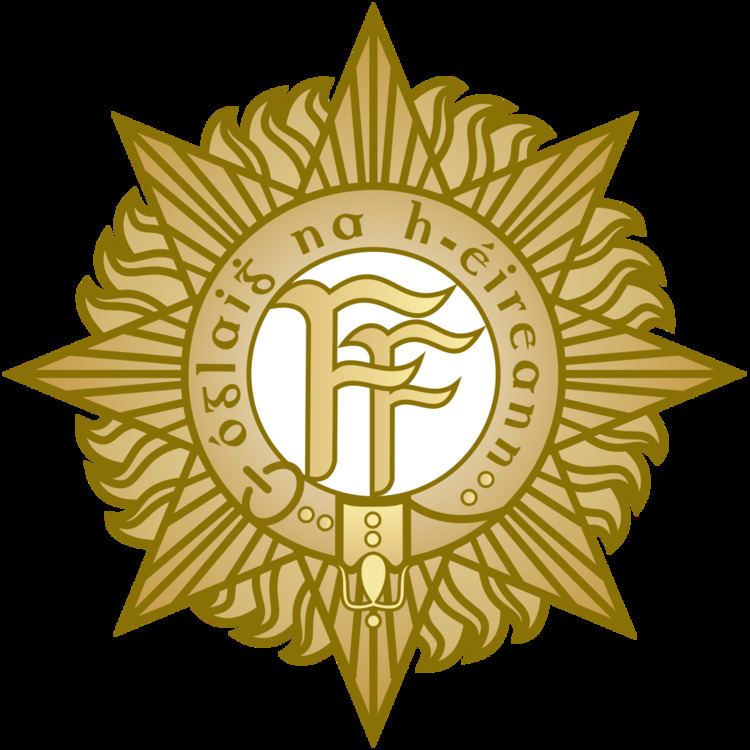Founded 1 October 2005 | Active personnel 2,323 (Nov 2015) | |
 | ||
The Reserve Defence Forces (RDF) (Irish: Na hÓglaigh Cúltaca) are the reserve components of the Defence Forces of Ireland. The RDF is organised into the First Line Reserve (FLR) and a Second Line Reserve. The First Line Reserve comprises former members of the Permanent Defence Force and the Second Line Reserve comprises the Army Reserve (AR) and Naval Service Reserve (NSR).
Contents
- History and organisation
- Earlier reserve forces LSF LDF FC
- Current tasks
- Future
- Female personnel
- Specialist Reserve and overseas deployments
- Popular culture
- References
The RDF was established on 1 October 2005 and replaced the Second Line Reserve, previously named An Fórsa Cosanta Áitiúil (FCÁ) in the case of the AR, and An Slua Muirí in the case of the NSR. The RDF has undergone a reorganisation in tandem with the Permanent Defence Force as part of the "Single Force" concept.
History and organisation
In 1997 a steering group was convened by the Chief of Staff of the Irish Defence Forces to conduct a special study on the restructuring of the Reserve Defence Forces. The report was completed in May 1999. The Reserve Defence Forces was established on 1 October 2005 in line with the recommendations of this report, and as part of a wider restructure of the Defence Forces from 2000 onwards.
An RDF Training Authority was established in the Defence Forces Training Centre (DFTC) which co-ordinates and conducts reserve training.
The Minister for Defence accepted the recommendations of a "Value for Money (VFM) Review of the Reserve Defence Force", published on 20 November 2012.
The Steering Committee recommended an Army Reserve and Naval Service Reserve based on a total strength ceiling of 4,069 personnel, (3,869 personnel Army Reserve and 200 personnel Naval Service Reserve), subject to existing organisational structures being revised.
In order to provide sufficient paid training days to sustain this strength, the Steering Committee recommended the withdrawal of gratuities from members of the Reserve and a re-allocation of the budgetary provision for gratuities of €0.9 million to provide sufficient paid training days for members of the Reserve.
The key points are;
The representative body for all ranks of the RDF is the Reserve Defence Forces Representative Association (RDFRA).
Earlier reserve forces: LSF, LDF, FCÁ
During The Emergency (Second World War), the civilian reserve was known as the Local Security Force, then as the Local Defence Force, which subsequently became translated into Irish as An Fórsa Cosanta Áitiúl (or FCÁ). The FCÁ persisted as such until 2005 until reorganised and renamed as above. For a more detailed history, see main article.
Current tasks
Tasks are assigned to the RDF to support the Permanent Defence Forces (PDF) in fulfilling its roles. These include;
As well as to augment the Permanent Defence Forces in times of crisis or emergency, where Reservists are liable to be called up on permanent service within the state or outside it by the Minister for Defence or Government of Ireland in accordance with the Defence Acts.
Future
The 2015 White Paper on Defence and the 2016 Programme for Government provide that the overall establishment of the Army Reserve (AR) and the Naval Service Reserve (NSR) be set at 4,169 personnel, consisting of 3,869 Army Reservists and the expansion of the establishment of the four Naval Service Reserve Units from 200 to 300 personnel. In 2016, recruitment campaigns and training were stepped up to meet these targets.
Female personnel
While the number of female personnel in the Permanent Defence Forces is at a low 6% (which recruitment is trying to increase), the number of female personnel within the RDF is higher, with 16.3% female personnel in the Army Reserve and 22% female personnel in the Naval Service Reserve.
'Specialist Reserve' and overseas deployments
The White Paper on Defence published in 2015 by the Irish government sets out plans for a "Specialist Reserve" to be created within the RDF, to augment professional skills that may not be readily available within the PDF, such as ICT, medical, ordnance and engineering professionals. The White Paper expects that personnel seconded to the Specialist Reserve could, subject to their availability, be integrated with their PDF counterparts and take part in live operations, including overseas missions, similar to other European reserve military forces.
Popular culture
Components of the Reserve Defence Forces (and previously the FCÁ) were involved as extras in the filming of the D-Day landing battle scenes in Saving Private Ryan – as well as battle scenes in Braveheart, My Boy Jack and other feature films.
